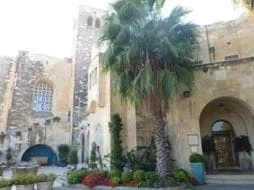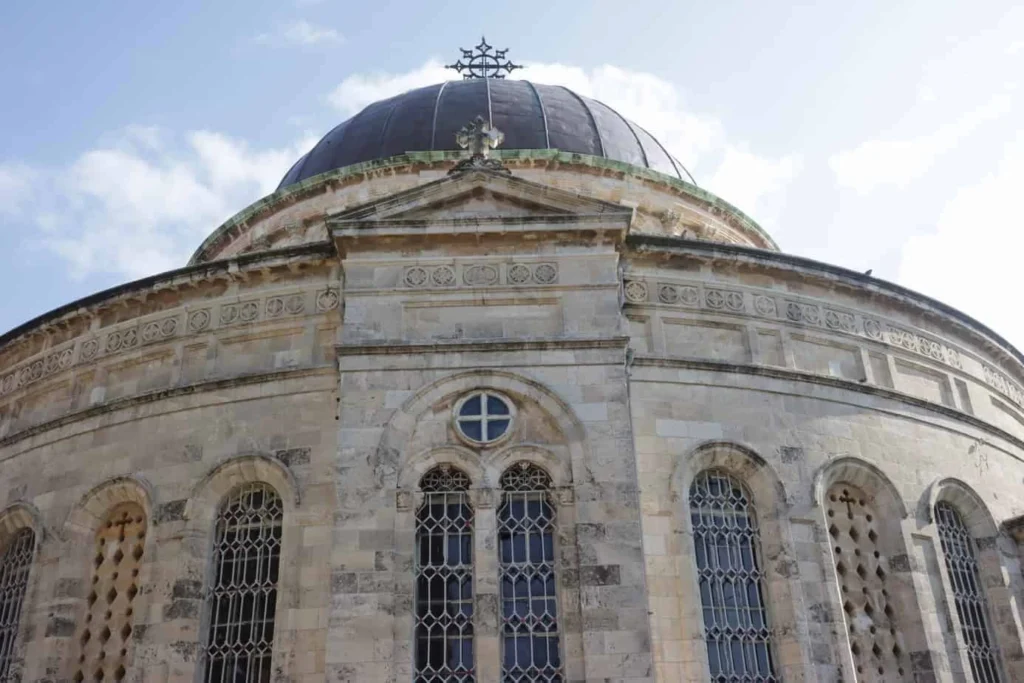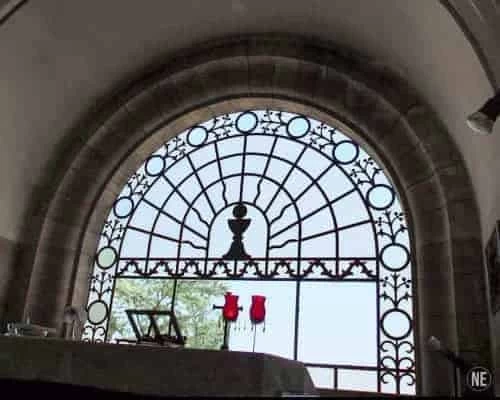The church is dedicated to the Scottish soldiers of the 52nd Division who played a crucial role in the country’s conquest during the First World War, notably in the Battle of Gaza. It bears the name of the patron saint of Scotland, Saint Andrew, one of the early disciples of Jesus. As part of a larger complex that includes the Saint Andrews Guest House, the church serves as a poignant memorial commemorating the bravery and sacrifice of these soldiers, honoring the legacy of Saint Andrew.

The Story of the church
During the Ottoman era, the British government, responsible for Anglican churches, acquired land in this area. Following the war, Scotland sought to honor its fallen. In 1927, General Allenby laid the cornerstone of the church. By 1930, the church was inaugurated, boasting an architectural style inspired by Arabic motifs and constructed using locally sourced materials like Armenian pottery and Hebron glass.
Today, this church stands as a solemn memorial to the Scottish soldiers who served during the mandate period and the Second World War. Among those remembered are two patrol dogs who made the ultimate sacrifice in the line of duty.
Inside the church
At the entrance, there are few decorations reminiscent of a Protestant church. Designed by architect Clifford Holiday, known for his work on various buildings in Jerusalem during the British Mandate period, including the old Jerusalem municipality building, the church showcases a blend of Western and Eastern architectural styles. This fusion is evident in features like domes and local black stones, lending the structure an antique charm typical of Holiday’s style.
The flag displayed serves as a symbol of Saint Andrew, after whom the church is named. Legend has it that Saint Andrew appeared before the King of Scotland in a dream, inspiring a white cross against a blue sky, symbolizing victory over the British in the 9th century. This cross, believed to be the one Saint Andrew was crucified on in Greece, remains Scotland’s flag and is utilized by other Christian denominations in the community. Musical events are also hosted in the church.
All the windows in the apse originate from Scotland. Notably, there is no physical separation between the pastor and the congregation. A plaque in the center of the apse depicts King Robert de Bruce, who expressed a wish for his heart to be buried in Jerusalem upon his death in 1329. Though his emissary’s journey was tragically interrupted, resulting in the heart’s return to Scotland, the church decided to honor Bruce’s wish as part of its dedication.
Basic Information
Name of church: St Andrews Church, Scots Memorial Church.
Address David Remez 1 st. Jerusalem
Christianity order : Protestant.
Year of build :1930
Arrival options
| Bus lines | Many buses stop at the first old train station : 22,71,72,74,30. |
| Car | It is very to reach the church, park in first train station parking and walk there by foot. |
| Taxi | Tell the driver to drive you to St. Andrew church, tell him its Infront of Menachem Begin Museum |
Logistic
Accessibility the church is wheelchair accessible.
Opening hours -due to the coronavirus better check with the website directly on the e-mail below:
Telephone number 972 (0)-2-673-2401.
Toilets available in the nearby guest house, but better get to the public toilet at the First Old Train Station.
Activities nearby
Menachem Begin Museum is right nearby. And you can walk to the lovely neighborhood of Mishkenot Shaananim. If you want a good walk, you can also visit Mount Zion with the church Dormition and enter the old town through the gate of Zion.
My experience
I chose to write about this church because it holds a significant place in the history of Jerusalem, yet it may not be as widely known as some of the more popular tourist destinations. If you’re seeking a quieter, more intimate church experience away from the bustling crowds of tourists, I encourage you to pay a visit and discover its rich history for yourself. Come and say hello—you won’t be disappointed!




